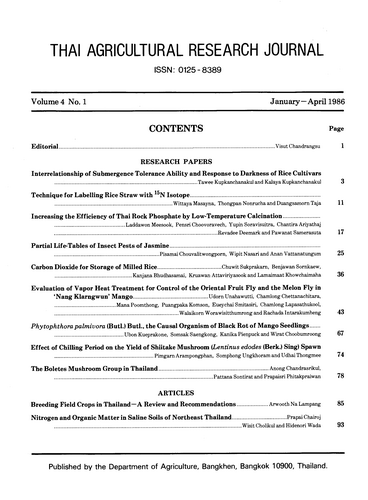Increasing the Efficiency of Thai Rock Phosphate by Low-Temperature Calcination
Abstract
Rock Phosphate form different sources in Thailand - Lampun, Kanchanaburi, Chainat, Ratchaburi, Petchaboon and Roi Et provinces , was calcinated at temperatures from 300 C to 900 C at intervals of 100 C for 30 minutes. Rock phosphate from Lampun province showed no change as a result of the calcination treatment. For rock phosphate from other sources, changes occured in no more than 1/3 of the test material when calcinated in teh temperature range500 - 700 C. However, in teh case of rock phosphate from Roi Et province, at 700 C there was an 82 percent change. The level of chang as a result of calcination was closely correlated with the aluminium oxide content of teh rock phosphate. In addition, teh Roi Et rock phosphate after calcination could be kept under normal atmospheric conditions for up to six months without anyfurther change. When the quality of the treated and untreated rock phosphate was compared by comparing th egrowth response of corn grown in pots, there was a clear statistically significant response to the use of the calcinated rock phosphate; however , field tests using corn were inconclusive on a account of variabl eclimatic conditions.
Downloads
Published
How to Cite
Issue
Section
License
Thai Agricultural Research Journal



